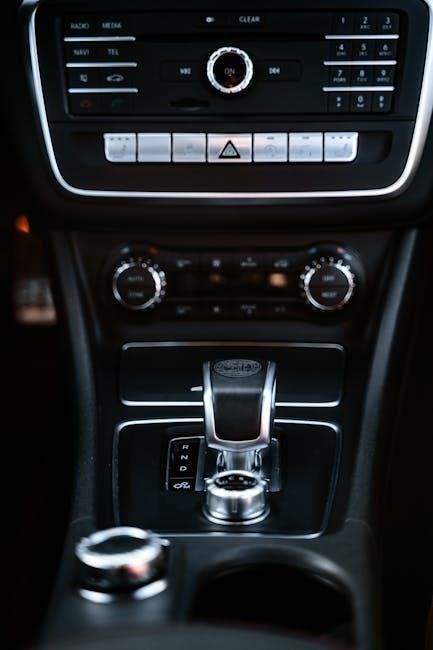Maggie Nelson’s Bluets is a lyrical exploration of love, loss, and the color blue, blending prose and poetry in a deeply personal and philosophical journey.
Overview of the Book
Bluets by Maggie Nelson is a hybrid work blending prose, poetry, and philosophy. Composed of 240 concise, lyrical pieces, the book explores the author’s personal and emotional journey through the prism of the color blue. Nelson weaves together fragments of memory, love, and loss, creating a deeply introspective narrative. The text reflects on cultural and historical associations of blue, from art to spirituality, while intertwining these with her own experiences of desire and heartache. This unique structure allows Nelson to examine themes of identity, longing, and the search for meaning. By merging the poetic with the philosophical, Bluets becomes both a meditation on color and a profound exploration of human emotion. The book’s innovative form and intimate tone have made it a celebrated work in contemporary literature.
Importance of the Color Blue
In Bluets, the color blue serves as both a literal and metaphorical thread, weaving together Maggie Nelson’s personal narrative with broader cultural and philosophical reflections. Blue, for Nelson, is not just a color but a symbol of longing, melancholy, and transcendence. She draws on its historical and artistic significance, from Renaissance art to the blues musical tradition, to explore themes of desire and memory. The color becomes a mirror for her inner world, reflecting her experiences of love, loss, and identity. By elevating blue to a central metaphor, Nelson transforms it into a universal language, allowing readers to connect their own emotions and stories to its enduring imagery. This rich, multilayered exploration of blue underscores its profound impact on human experience.

Background of Maggie Nelson
Maggie Nelson, born in 1973, is a celebrated American writer and poet known for her genre-blurring works that explore identity, love, and memory with lyrical precision and vulnerability.
Brief Biography
Maggie Nelson, born in 1973, is a distinguished American writer, poet, and critic. Her work often intertwines personal narrative with philosophical inquiry, creating a unique literary voice. Nelson has authored several influential books, including The Argonauts and Bluets, which have garnered critical acclaim for their innovative style and emotional depth. She is known for exploring themes of identity, love, and memory, often challenging traditional genre boundaries. Nelson’s writing is both deeply personal and universally resonant, making her one of the most respected voices in contemporary literature. Her ability to blend memoir, criticism, and poetry has established her as a leading figure in modern literary circles.
Her Literary Style and Influence
Maggie Nelson’s literary style is a captivating blend of lyricism, philosophy, and personal narrative, creating a unique voice that resonates deeply with readers. Her work, particularly in Bluets, showcases a fragmented yet cohesive structure, where prose and poetry intertwine seamlessly. This innovative approach has influenced a generation of writers, encouraging experimentation with genre and form. Nelson’s ability to merge the intimate with the abstract has redefined memoir and critical writing, making her a pivotal figure in contemporary literature. Her influence extends beyond academia, inspiring readers to embrace complexity and vulnerability in their own storytelling. Through her distinctive style, Nelson has carved a niche that challenges traditional literary norms, leaving an indelible mark on modern writing.
Themes Explored in “Bluets”
Maggie Nelson’s Bluets delves into themes of love, relationships, and identity, using the color blue as a metaphor for emotional and philosophical reflections on loss and longing.

The Color Blue as a Metaphor
In Bluets, Maggie Nelson uses the color blue as a multifaceted metaphor, weaving it into personal narratives of love, heartbreak, and identity. Blue symbolizes both the beauty of connection and the ache of longing. Nelson draws on cultural and historical associations, from art to literature, to explore blue’s universal significance. The color becomes a bridge between her inner world and the external, offering a lens to examine desire, vulnerability, and existential questions. Through fragmented prose, she reveals how blue embodies the intangible, the elusive, and the deeply human, creating a rich tapestry of meaning that resonates beyond the page.
Love and Relationships
Maggie Nelson’s Bluets delves into the intricate dynamics of love and relationships, intertwining personal experiences with philosophical musings. The book captures the vulnerability and complexity of romantic connections, exploring themes of desire, intimacy, and heartbreak. Nelson reflects on her own experiences, offering a raw and honest portrayal of love’s challenges and profundities. Her prose-poetry hybrid style allows for a deeply intimate and emotional exploration, making the reader resonate with the universal truths of love. Through her lyrical and fragmented narrative, Nelson transcends traditional storytelling, creating a work that is both a personal ode to love and a universal meditation on its many forms and impacts.

Structure and Literary Style
Bluets blends prose and poetry, creating a fragmented, lyrical narrative. Nelson’s concise, impactful fragments mirror the elusive nature of blue, reflecting her emotional and philosophical explorations.
Prose and Poetry Blend

Maggie Nelson’s Bluets masterfully combines prose and poetry, creating a unique literary form. Each fragment is a concise, evocative meditation, blending philosophical musings with personal narratives. This hybrid structure allows Nelson to explore the fluidity of emotion and thought, mirroring the instability of the color blue itself. By merging genres, she crafts a work that feels both deeply intimate and universally relatable. The interplay between poetic imagery and prose-like reflection adds layers of complexity, making Bluets a compelling and innovative read. Nelson’s approach challenges traditional boundaries, offering a fresh perspective on love, loss, and identity.
Fragmented and Lyrical Narrative
Bluets by Maggie Nelson is characterized by its fragmented and lyrical narrative structure. The book consists of 240 short, prose-poetic entries that explore themes of love, heartbreak, and the significance of the color blue. Each fragment is a meditation, often beginning with “Suppose I were to say…” or “I remember…,” creating a sense of immediacy and intimacy. This non-linear approach mirrors the fluidity of emotions and thoughts, allowing Nelson to weave personal anecdotes with philosophical reflections seamlessly. The fragmented form also echoes the instability and elusiveness of blue, which becomes a metaphor for longing and vulnerability. Through this lyrical and broken narrative, Nelson invites readers to piece together their own meaning, making the experience deeply personal and transformative.

Reception and Impact
Bluets received critical acclaim for its lyrical prose and emotional depth, resonating deeply with readers and leaving a lasting impact on contemporary literature and personal reflection.

Critical Acclaim
Bluets garnered widespread critical acclaim for its innovative blend of poetry and prose. Reviewers praised Nelson’s ability to weave personal narratives with philosophical musings, creating a deeply resonant work. The book’s lyrical and fragmented structure was celebrated for its originality, offering readers a fresh perspective on themes of love, loss, and identity. Many critics noted how Nelson’s exploration of the color blue as a metaphor transcended traditional literary boundaries, earning her a reputation as a bold and visionary writer. The acclaim has solidified Bluets as a landmark in contemporary literature, cherished for its emotional and intellectual depth.
Commercial Success and Popularity
Bluets achieved significant commercial success and popularity, resonating with a wide audience. Its unique blend of poetry and prose attracted readers seeking both literary depth and emotional connection. The book’s popularity grew through word of mouth and critical praise, establishing it as a contemporary classic. Available in various formats, including PDF, the work has been widely downloaded and shared, reaching readers globally. Its influence extends beyond literature, inspiring adaptations and discussions in art and culture. The book’s enduring popularity reflects its universal themes and Nelson’s ability to connect deeply with readers, solidifying its place as a beloved and impactful work in modern literature.

Philosophical and Cultural Aspects
Bluets delves into philosophical inquiries about color, emotion, and identity, drawing from Wittgenstein’s ideas. It explores cultural symbolism of blue, weaving personal and universal reflections on its significance.
Influence of Wittgenstein
Maggie Nelson’s Bluets is deeply influenced by Ludwig Wittgenstein’s philosophical methods, particularly his exploration of language and meaning. Wittgenstein’s concept of “family resemblances” is echoed in Nelson’s fragmented, lyrical narrative, where she examines the color blue through personal and cultural lenses. Like Wittgenstein, Nelson seeks to clarify rather than define, allowing the reader to experience the complexity of blue as both an abstract concept and a deeply personal symbol. Her prose mirrors Wittgenstein’s philosophical style, blending logic with emotion and creating a space where the boundaries between thought and feeling blur. This influence is particularly evident in her meditative approach to language and its relationship to perception, making Bluets a work that resonates with both philosophical depth and poetic beauty.
Cultural Symbolism of Blue
In Bluets, Maggie Nelson delves into the cultural symbolism of blue, exploring its universal yet varied meanings across different societies. She examines how blue has been associated with melancholy, spirituality, and transcendence in Western cultures, while in others, it signifies protection, royalty, or identity, as seen in the Tuareg people’s deep connection to the color. Nelson’s work highlights the duality of blue as both a shared human experience and a uniquely personal symbol. By weaving together historical, cultural, and personal narratives, she illustrates how blue transcends language and geography, becoming a mirror for collective and individual emotions. This exploration underscores the color’s enduring significance in human consciousness, bridging the gap between the universal and the intimate.
Personal Reflections and Emotional Journey
Maggie Nelson’s Bluets offers a deeply intimate reflection on her experiences with love, loss, and identity, weaving personal stories with philosophical musings on the color blue.
Reading Experiences
Readers often describe their encounter with Bluets as a profound and immersive experience, resonating deeply with its lyrical prose and emotional vulnerability. The book’s hybrid form, blending poetry and essays, invites readers to reflect on their own relationships with love, loss, and identity. Many have shared how the text’s intimate tone creates a sense of connection, as if Nelson is speaking directly to them. The availability of Bluets in PDF format has made it accessible to a wider audience, allowing readers to engage with its meditative reflections on the color blue and its cultural significance. The book’s ability to intertwine personal narratives with philosophical inquiry has left a lasting impact on many, making it a cherished and revisited work. Its concise yet powerful structure ensures a compelling reading journey.

Emotional and Psychological Impact
Bluets leaves readers with a profound emotional and psychological resonance, as Maggie Nelson’s lyrical prose delves into themes of love, loss, and identity. The book’s vulnerability and honesty create a deep connection, allowing readers to reflect on their own experiences with heartache and longing. Nelson’s exploration of the color blue as a metaphor for melancholy and desire strikes a universal chord, evoking empathy and introspection. The text’s intimate tone often feels cathartic, offering solace while acknowledging the complexity of human emotions. Many readers have reported feeling seen and understood, as Nelson’s words navigate the fragile balance between pain and beauty. The emotional depth of Bluets lingers long after the final page, leaving a lasting imprint on the reader’s psyche. Its accessibility in PDF format has only amplified its reach and emotional impact.
Bluets remains a timeless exploration of love, loss, and identity, offering a unique blend of prose and poetry. Its emotional depth and philosophical insights continue to resonate deeply, making it a cherished read in both physical and PDF formats.
Legacy of “Bluets”
Maggie Nelson’s Bluets has left an indelible mark on contemporary literature, celebrated for its lyrical prose and philosophical depth. The book’s exploration of love, identity, and the color blue continues to inspire readers and writers alike. Its unique blend of memoir, poetry, and criticism has influenced a generation of authors, making it a landmark work in hybrid literature. Available in various formats, including PDF, Bluets remains widely accessible, ensuring its enduring relevance. The emotional and intellectual resonance of Nelson’s work solidifies its place as a modern classic, cherished for its ability to transform personal experiences into universal truths.

Final Thoughts on the Book’s Significance
Bluets by Maggie Nelson is a profound and deeply moving work that transcends traditional literary boundaries. Its exploration of love, identity, and the color blue creates a rich tapestry of emotion and thought. Nelson’s unique voice and lyrical prose have resonated with readers, making the book a cherished companion for many. The PDF version of Bluets has further expanded its reach, allowing global access to its timeless reflections. As a work of both personal and philosophical significance, Bluets continues to inspire, offering readers a space to reflect on their own experiences of love and loss. Its enduring impact lies in its ability to connect the intimate with the universal, leaving a lasting imprint on contemporary literature.






























